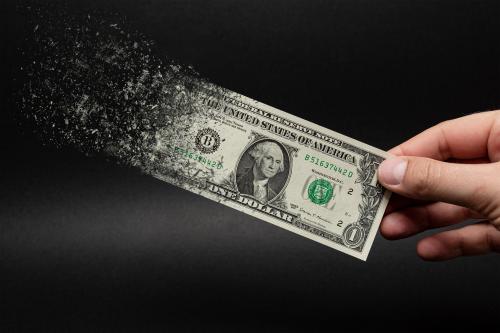This blog is a summary of a September 13, 2022 discussion on Twitter Spaces. Quotes may have been edited slightly for clarity. You can listen to the full conversation on Twitter here.
While year-over-year inflation in August decreased slightly, headline inflation rose 0.1% and core inflation rose 0.6% over the previous month. On September 13, the morning of the Bureau of Labor Statistics’ release of the latest Consumer Price Index report, Brookings once again convened experts David Wessel, Wendy Edelberg, and Justin Wolfers to discuss the state of inflation in the U.S. You can read a summary of their discussion below and listen to the full conversation on Twitter.
Headline inflation is better, but core is concerning
Overall prices essentially held steady in August, due in significant part to a decline in energy prices. That is good news for consumers in their day-to-day lives, said Hamilton Project Director Wendy Edelberg. But the volatility of energy prices means that they aren’t the most useful for looking at where inflation is going – for that, says Edelberg, you should look at core inflation, which is headline inflation minus the volatile contributions of food and energy costs. “So the bad news on core inflation tells us that we have concerns about inflation going forward,” said Edelberg. “That’s where the future news is.”
“The bad news on core inflation tells us that we have concerns about inflation going forward.”
“I don’t see inflation taking off,” said Justin Wolfers, nonresident senior fellow at Brookings and an economics professor at the University of Michigan. “It looks like it’s just sort of stuck where it is, but that’s very disappointing.” In response to the still-high price increases, Wolfers said if he were Fed chair he would raise interest rates by ¾ percentage point at next week’s Federal Open Market Committee meeting. Furthermore, where many people had thought the Fed might only raise rates at the December meeting by ¼ point, Wolfers said that may be changing in light of the latest CPI release. “To the extent that this [report] paints a story of inflation being stuck, if I still continue to believe that in a month’s time, then I’d want to be a little bit more aggressive,” he said.
“Transitory” is now a banned word
A new paper released in the fall 2022 edition of the Brookings Papers on Economic Activity (BPEA) detailed three reasons that so-called “Team Transitory”—economists who held that inflation would pass once pandemic factors abated—have been proven wrong. It further argued that the Federal Reserve would likely have to push unemployment rates much higher than currently projected to return inflation to the 2% target. Edelberg agreed that Team Transitory’s hopes had not come to pass, but with unemployment holding quite low at 3.7% and goods spending well above pre-pandemic trend, the Fed still had tools at its disposal to avoid a hard landing and/or stagflation. “We continue to have a roaring economy and strong inflation. And that’s just kind of bread-and-butter stuff for the Fed,” she said. “The Fed has more to do to slow the economy.”
Wages are up, but not enough to keep up
“I remain optimistic that the future is better than the present, even if today’s report made me mildly less optimistic.”
It’s clear that except for a few sectors, wages have not kept pace with inflation. What’s unclear is the precise source of wage pressures, says Edelberg. “In these moments of extraordinary changes in inflation and expectations moving around from month to month, it’s very hard to actually figure out what’s driving wages right now.” Later in the conversation, Wolfers tied falling real wages to flux in the labor market, which currently features very low unemployment but a labor force participation rate that has not yet returned to pre-pandemic levels. As to rectifying this picture in which employers are desperate to hire yet wages aren’t keeping up with inflation, Wolfers suggested that the shift to remote work may be part of the answer: “Maybe the answer is one of the ways workers are using their bargaining power is not to get higher wages but to get better working conditions.”
Student loan forgiveness certainly won’t reduce inflation, but may not increase it much
Setting aside debates of whether the government should – or can – forgive student loans and by how much, our experts were asked about the macroeconomic implications of President Joe Biden’s recently announced plan to forgive up to $20,000 in student loans for individuals making less than $125,000. “You give a whole bunch of people $20,000 that sounds like it’s going to be a form of stimulus,” said Wolfers. But it doesn’t mean that a lot of people will suddenly go spend $20,000, adding to inflation, he said. Most economists agree that people will only spend around 5% of this forgiveness, which Wolfers says “still is a boost to spending at a time where we have more people wanting stuff than there is stuff being produced. So it would probably raise inflation somewhat.” He emphasized that the reasons to favor or oppose student-loan forgiveness reflect factors other than macroeconomics, such as fairness and the dysfunction of the student loan system.
A doom and gloom report, but some signs for optimism
Edelberg said she would have to look very hard for something to be optimistic about in this CPI report. Wolfers agreed but noted several potential bright spots elsewhere in the data:
- Gas prices have continued to fall and will continue to push down headline inflation
- Inflation expectations have dropped recently, and falling gas prices should also help that continue
- Nominal wage growth isn’t taking off, staving off concerns about a wage-price spiral
- Global supply chain pressures continue to unwind
“So I remain optimistic that the future is better than the present,” he said, “even if today’s report made me mildly less optimistic.”
The Brookings Institution is financed through the support of a diverse array of foundations, corporations, governments, individuals, as well as an endowment. A list of donors can be found in our annual reports published online here. The findings, interpretations, and conclusions in this report are solely those of its author(s) and are not influenced by any donation.






Commentary
5 key takeaways on inflation from the August CPI report
September 14, 2022